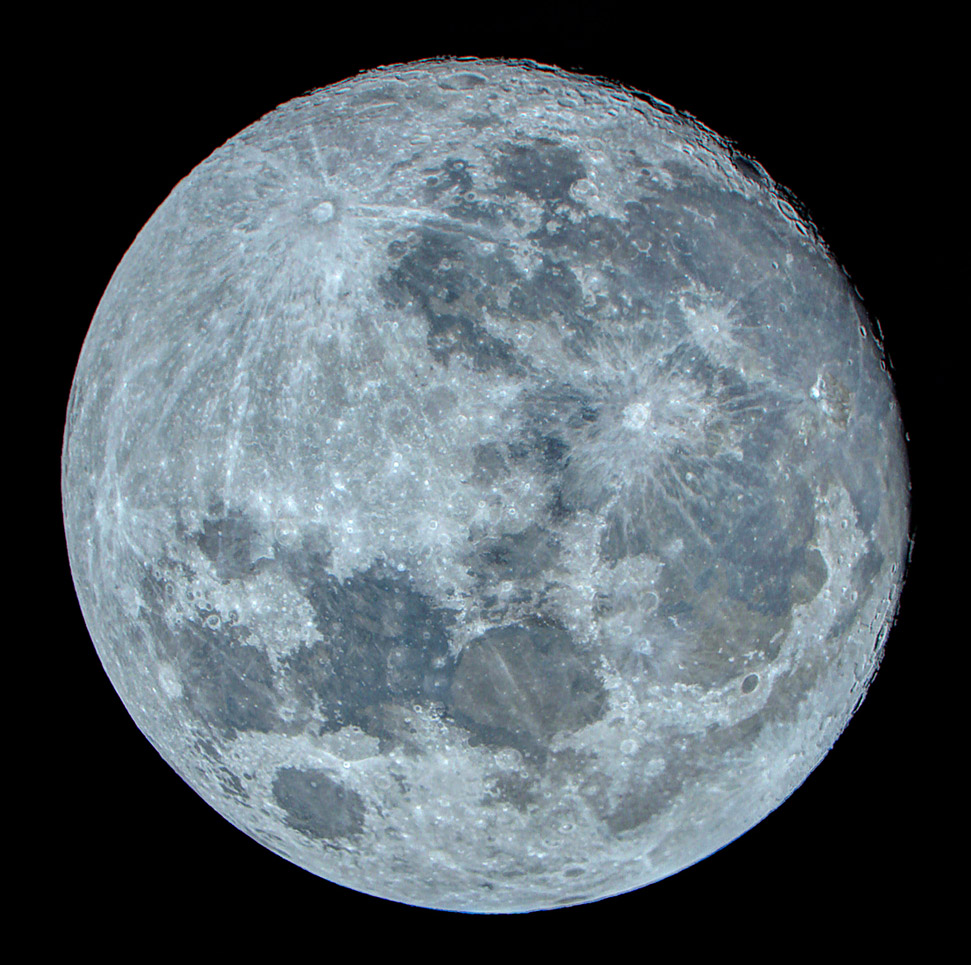November 22, 2022
Missing Rays
Originally published December 28, 2012

south up image by Tosi Philippe, Nîmes, France
Is there any mare that is not traversed by rays? Not Crisium, which Proclus' rays splay across; nor any other major mare, except Humorum. Humorum does have some bright splotches from small crater's ejecta, but that is all. Looking at an image like this high contrast, high Sun view raises questions, some like the former, relatively trivial. Another, more provocative question concerns the possible ray crossing Sinus Iridum. If it is a ray, is it a continuation of the ray from Copernicus that passes east of Pytheas? That would be very exciting for it would mean that the darker, younger lava flows in western and central Imbrium flowed over Copernicus' rays, obliterating some of them, and stranding the Iridum ray. It does appear that many rays from Copernicus stop at the boundary with the Imbrium dark lavas. This interpretation does not survive closer scrutiny, however. The age of the young Imbrium dark flows is about 2.5 billion years according to crater counts. But Copernicus is dated at 0.8 b.y. by both crater counts and radiometric age determinations made on samples purported to have been effected by the formation of Copernicus. So unless one of these age estimates is wrong the lava flow could not have covered the rays. In fact, looking more closely you can see that some rays from Copernicus do exist on the dark lavas north of LaHire and Euler. Images can inspire new questions, some of which are productive by being correct and others by causing deeper examination of evidence.
Chuck Wood
Technical Details
Self made newton 410 mm F/5.6 + eos 5DMII 200 iso, with fusion of these different exposures: 1/320; 1/400; 1/500; 1/640; 1/800; 1/1000; 1/1250; 1/2000; 1/3200; 1/4000; 1/5000; 1/6400 sec. Processed by Photomatix Pro 4.2 and CS5.
Yesterday's LPOD: Another Good One
Tomorrow's LPOD: Catching Up with Pythagoras
COMMENTS?
Register, Log in, and join in the comments.



